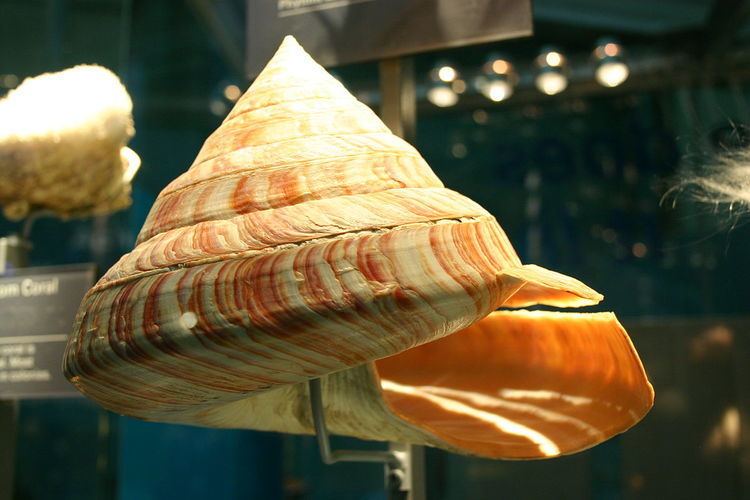Kingdom Animalia | Rank Superfamily | |
 | ||
Similar Archaeogastropoda, Scissurellidae, Perotrochus, Entemnotrochus rumphii, Entemnotrochus | ||
Pleurotomariacea is one of two names that are used for a taxonomic superfamily of sea snails that are an ancient lineage and are well represented in the fossil record. The name Pleurotomariacea is used by paleontologists, who, because they usually have only the hard parts of mollusks to study, often use a slightly different scheme of classification from that used by scientists who study living mollusks.
The name Pleurotomariacea is based on Swainson, 1840 (Pleurotomariae) and was described in 1960 in the Treatise on Invertebrate Paleontology, (I197) The taxon was established for mostly conispiral, but also discoidal and auriform (ear-like) shells which have a nacreous, aragonite, inner layer.
The Pleurotomariacea, now often seen as Pleurotomarioidea, has been included in the Archaegastropoda. although more recent classifications put it in a more restricted sense in the Vetigastropoda
The evolutionary derivation of the group is thought to be from the Bellerophontacea and to have happened late in the Cambrian. Earlier gastropods belonged to the Helcionellacea, Bellerophontacea, and questionably to the Palegiellacea.
The Treatise lists the following families, here in alphabetical order. Catantostomatidae, Eotomariidae, Euomphalopteridae, Gosselitinidae, Haliotidae, Kittlidiscidae, Laubellidae, Lophospiridae, Luciellidae, Phanerotrematidae, Phymatopleuridae, Pleurotromariidae, Polytremerida, Portlockiellidae, Rhaphischismatidae, Raphystomatidae, Scissurellidae, Sinuopeidae, Tremnotropidae, Trochotomidae, Zygitidae.
Bouchet & Rocroi, 2005, with a greater emphasis on molecular characteristics than shell characters, limited the Pleurotomariacea, as Pleurotomarioidea, to the Pleurotomariidae, Catantostomatidae, Kittilidacidae, Phymatopleuridae, Portlockiellidae, Rhaphischismatidae, Trochotomidae, and Zygitidae. The other families that are included in this superfamily in the Treatise have been reassigned by Bouchet & Rocroi to other higher taxa.
Recent families
The following are the Recent families in the superfamily, along with their respective living species:
